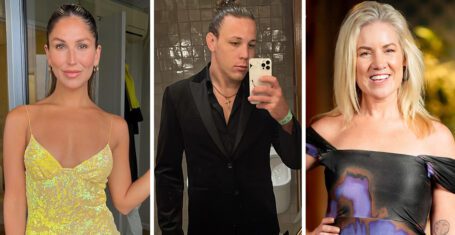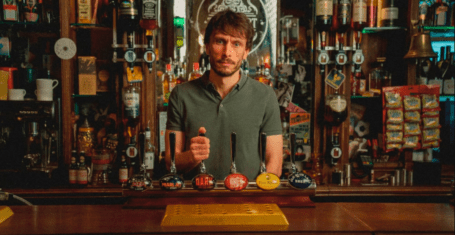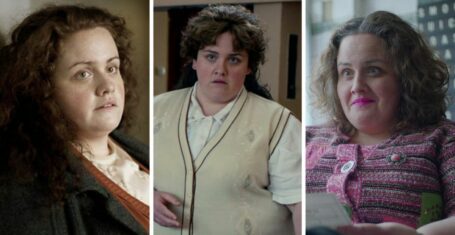
Why I actually just despise Skins
A sad cool show about cool sad people
CN: discussion/mention of mental illness, suicide and eating disorders.
I wrote an article a while ago about the connection between music and memories. Play the opening music to Skins, and this effect will have me taken right back to somewhere between Year 10 and Year 11 because, like many people, I went through a teenage infatuation with the lives of an evolving group of Bristol sixth-formers. As a fairly mild and inoffensive 15-year-old it fascinated me: the dramatic relationships, the drug-fuelled parties, the chaotic mid-2000s clothing, and what – at least at the time – seemed like real and raw portrayals of teenage mental health.
Skins has repeatedly been praised for its refreshing take on British teenagers, particularly in contrast to TV shows like Gossip Girl and The O.C., which aired at similar points across the Atlantic. What was different with this British affair was that it showed ‘ordinary’ teenagers, played by actual 16-to-18-year-olds, tackling real-life, ‘relatable’ issues. Here I give credit where it is due: written by writers who were barely out of their teens themselves, much of Skins was bitingly funny and completely endearing. There is, after all, a reason it resonated so heavily with myself and so many people I know.
However, it is also with this pseudo-relatability that I take massive issue. Because, however much the show spoke to real British teenagers, the version of teenage British life it presents is not only inaccurate, but much of it is actually actively dangerous.
No TV show can avoid sensationalism, and if drama didn’t happen with a slightly absurd level frequency it would cease to be engaging. But even if the characters themselves seemed real, and if the issues tackled were incredibly important, the way in which Skins depicted everything from eating disorders to drugs was with a degree of romanticism that (unwittingly or not) transformed its characters into a source of aspiration rather than a social commentary.
This is a problem that plagued the show almost in its entirety, but it was most prevalent with regards to its female characters. A most obvious example of this is Cassie: lovely, lovely Cassie, ‘didn’t eat for three days so I could be lovely’ Cassie. Yep, as well as literally depicting very easily replicable disordered eating habits (one scene is essentially an in-depth description of how to trick people into thinking you’re eating), her character was shrouded in a whimsy that meant she was destined to be transformed into a GIF and reblogged onto a thousand pro-anorexia Tumblr blogs.
Then there is Effy. Effy is a girl who quite obviously has a slew of incredibly debilitating mental health conditions. Effy needs help. Is this ever explored properly throughout the first four seasons she featured on the show? Um, obviously not? Because after milking her sadness of all its aloof romantic capital, the main purpose of her character was to stand around and look fit. Quite literally, a large portion of her character revolves around the oh-so-fascinating idea that she barely speaks. She’s just that interesting and beautiful, that she doesn’t have to voice her emotions but rather we simply soak up how damaged she is from her distant aura.
In fairness, by Season 4 Effy is sectioned after a suicide attempt, so the show in some ways properly acknowledges her as mentally ill. However, her therapist is actually just trying to hypnotise rather than cure her, and then murders her boyfriend – so you can see why I might not be wholly convinced by the depth of it as a portrayal of institutionalised mental illness.
At least Gossip Girl, whilst not flawless in retrospect, never made any claim to represent the audience it was appealing to but entirely owned the escapism of its drama. Furthermore, something like Sex Education shows how far we have come since the mid-2000s. Whilst the trope of the misunderstood white girl who smokes in school somewhat irritatingly persists, the difference is that these characters don’t revolve entirely around their pain; instead, their pain is viewed as something to be unpicked and understood in order to be related to, rather than than simply displayed as a spectacle through drinking, drugs and Tumblr-ready one-line quotes.
Skins didn’t send me off the rails and it didn’t give me mental health problems. It did, however, mean that when at the age of 17 my mental health actually dipped, a significant amount of the media I had spent my teenage years consuming had taught me that sadness was beautiful and pain was intriguing. It left me with no real emotional understanding beyond a hollow, tragic aesthetic.
Sadness is real and raw and it is vital that we validate these teenage emotions, but I am so done with the idea that sadness is a skinny white girl smoking a cigarette and aspiring to be ‘lovely’. That’s not real; that’s completely irresponsible.
Cover image sourced from Netflix.









































